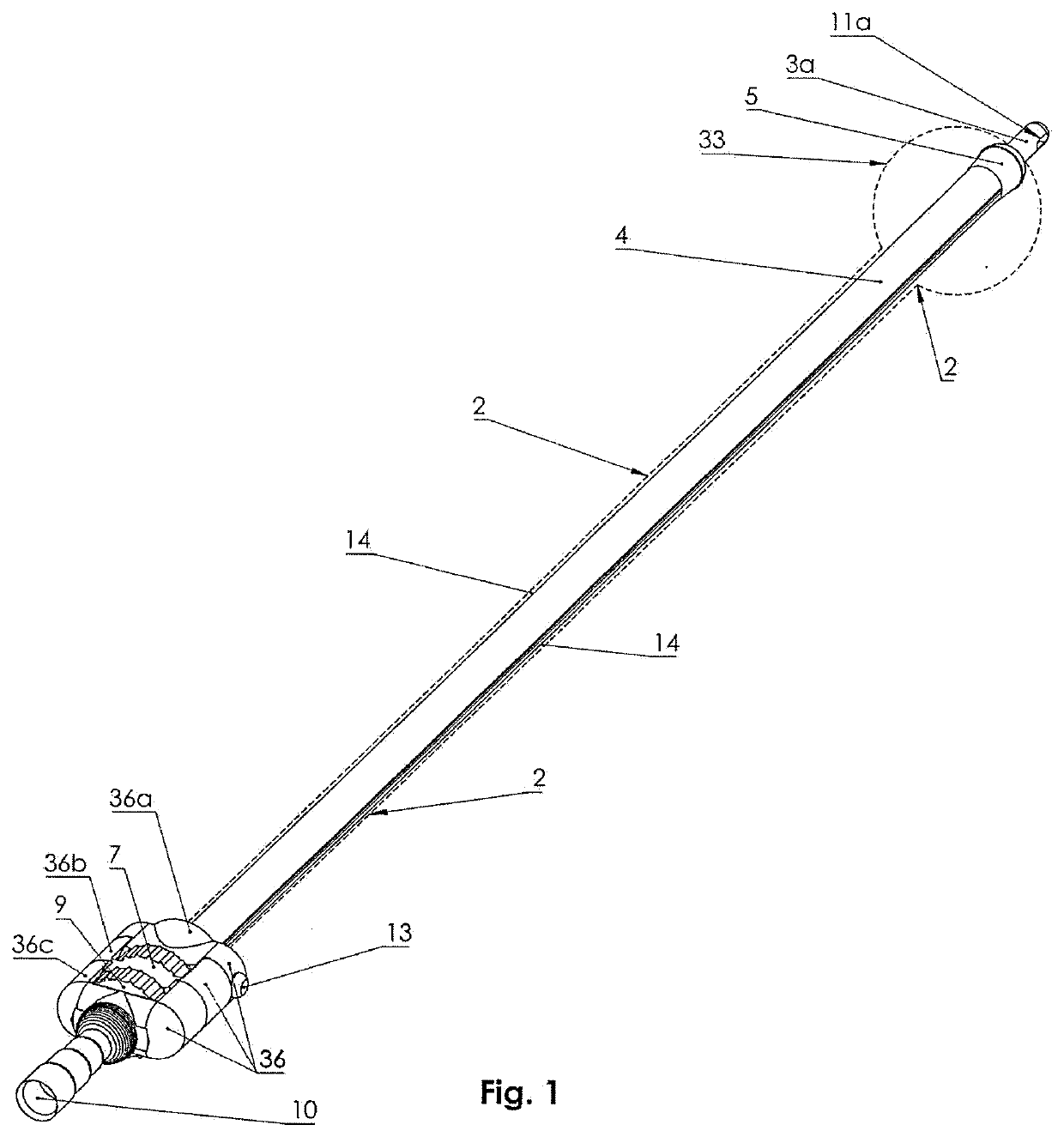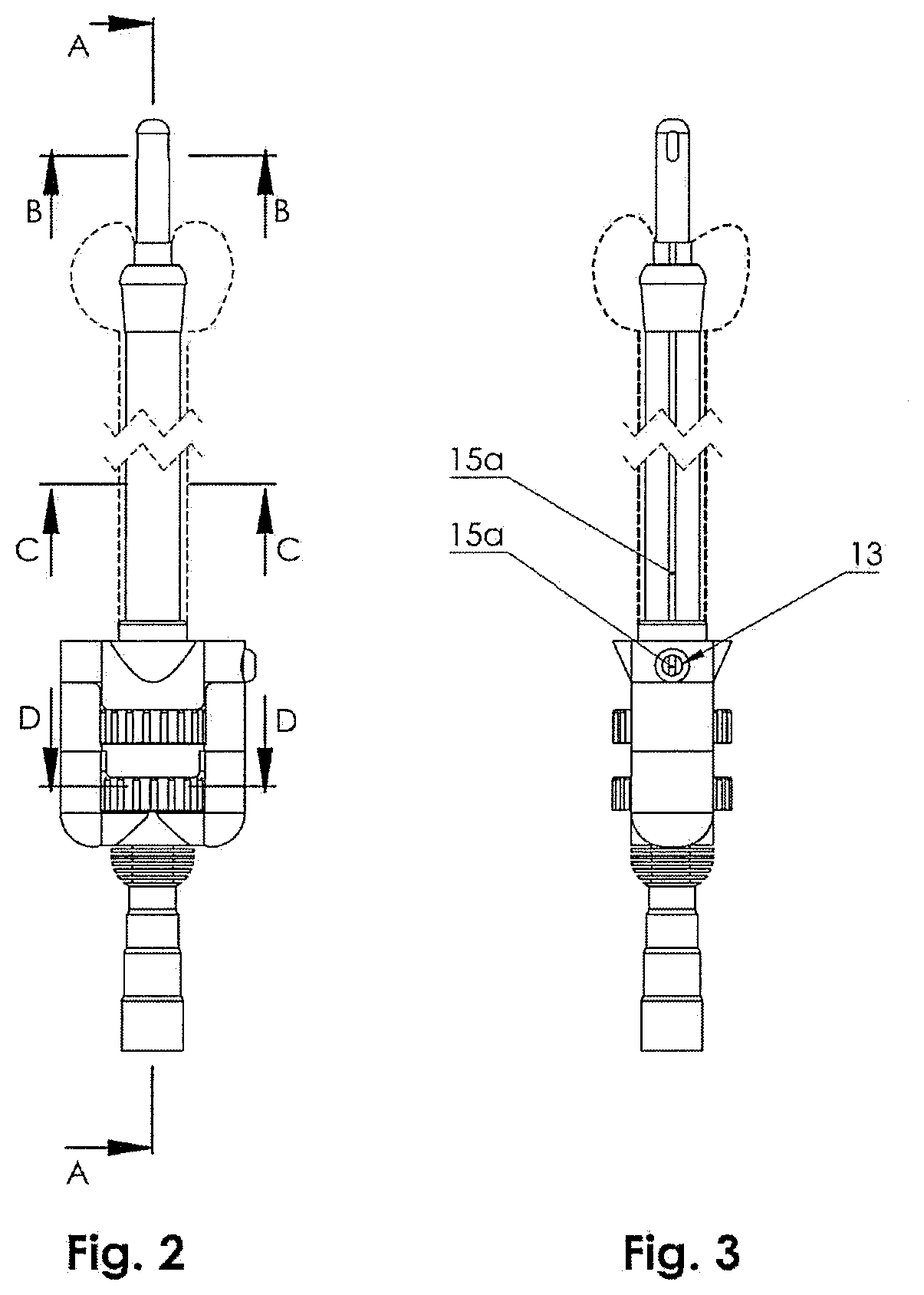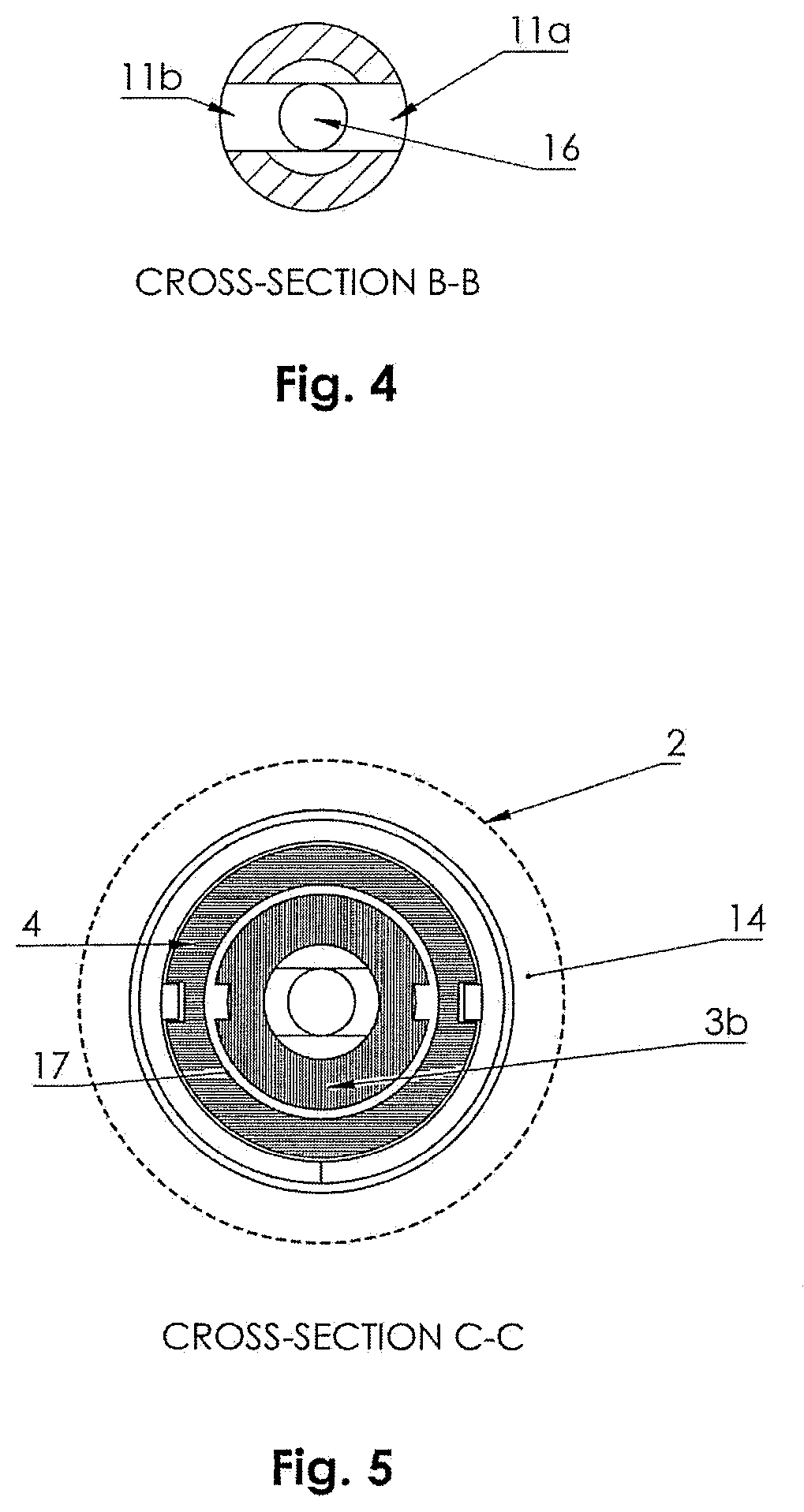Minimally invasive catheter
a catheter and minimal technology, applied in the field of catheters, can solve the problems of high rate of complications related to the use of indwelling catheters, the economic impact of these complications is enormous, and the pain and trauma of epithelium, so as to prevent side flow of urine, reduce sliding friction, and improve the fitting of catheter surfaces.
- Summary
- Abstract
- Description
- Claims
- Application Information
AI Technical Summary
Benefits of technology
Problems solved by technology
Method used
Image
Examples
Embodiment Construction
[0049]The outer tube 4 and the inner tube 3 are sufficiently flexible for easily passing curvatures of the urethra.
[0050]The catheter according to the present invention includes a distal part 36a of the handle 36, tubular membrane 2, distal part 3a of the inner tube 3, outer tube 4, rounded tip 5 of the outer tube 4, medial part 36b of the handle 36, nut 7 of the medial part 36b of the handle 36, proximal part 36c of the handle 36, nut 9 of the proximal part 36c of the handle 36, the proximal opening 10 of the catheter 1 that is attachable to urine bags, or used for access to the urinary tract or other body cavities.
[0051]The distal part 3a of the inner tube 3 has lateral holes 11a, 11b for urine flow. The tubular membrane 2 has an enlargement in the form of a balloon 33 next to the distal part 3a of the inner tube 3. When the fluid is injected through the hole 13 of the handle 36, said enlargement of the tubular membrane 2 forms a balloon 33 at the end of the catheter 1, as a part ...
PUM
 Login to View More
Login to View More Abstract
Description
Claims
Application Information
 Login to View More
Login to View More - R&D Engineer
- R&D Manager
- IP Professional
- Industry Leading Data Capabilities
- Powerful AI technology
- Patent DNA Extraction
Browse by: Latest US Patents, China's latest patents, Technical Efficacy Thesaurus, Application Domain, Technology Topic, Popular Technical Reports.
© 2024 PatSnap. All rights reserved.Legal|Privacy policy|Modern Slavery Act Transparency Statement|Sitemap|About US| Contact US: help@patsnap.com










